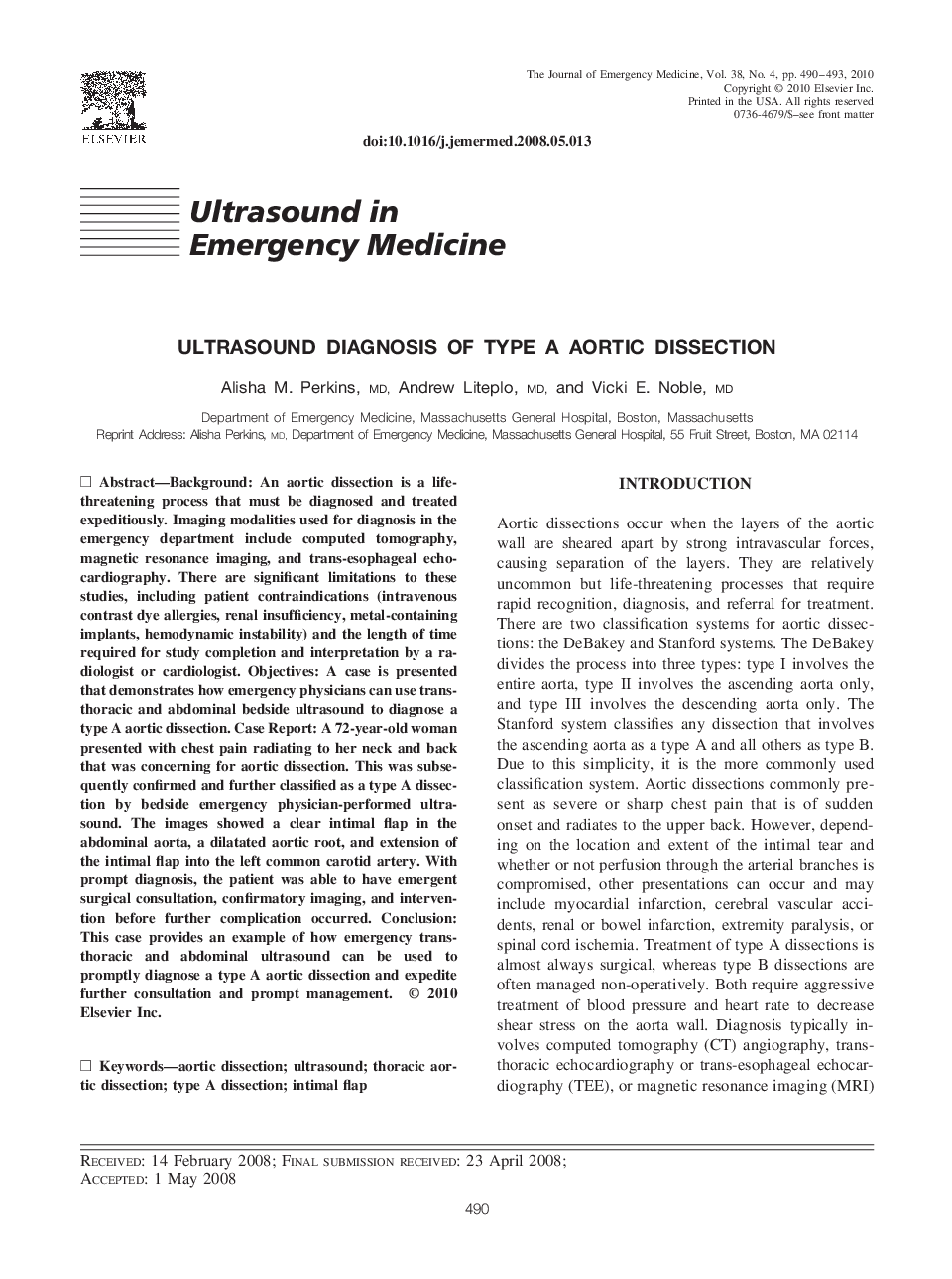| Article ID | Journal | Published Year | Pages | File Type |
|---|---|---|---|---|
| 3248622 | The Journal of Emergency Medicine | 2010 | 4 Pages |
Background: An aortic dissection is a life-threatening process that must be diagnosed and treated expeditiously. Imaging modalities used for diagnosis in the emergency department include computed tomography, magnetic resonance imaging, and trans-esophageal echocardiography. There are significant limitations to these studies, including patient contraindications (intravenous contrast dye allergies, renal insufficiency, metal-containing implants, hemodynamic instability) and the length of time required for study completion and interpretation by a radiologist or cardiologist. Objectives: A case is presented that demonstrates how emergency physicians can use trans-thoracic and abdominal bedside ultrasound to diagnose a type A aortic dissection. Case Report: A 72-year-old woman presented with chest pain radiating to her neck and back that was concerning for aortic dissection. This was subsequently confirmed and further classified as a type A dissection by bedside emergency physician-performed ultrasound. The images showed a clear intimal flap in the abdominal aorta, a dilatated aortic root, and extension of the intimal flap into the left common carotid artery. With prompt diagnosis, the patient was able to have emergent surgical consultation, confirmatory imaging, and intervention before further complication occurred. Conclusion: This case provides an example of how emergency trans-thoracic and abdominal ultrasound can be used to promptly diagnose a type A aortic dissection and expedite further consultation and prompt management.
